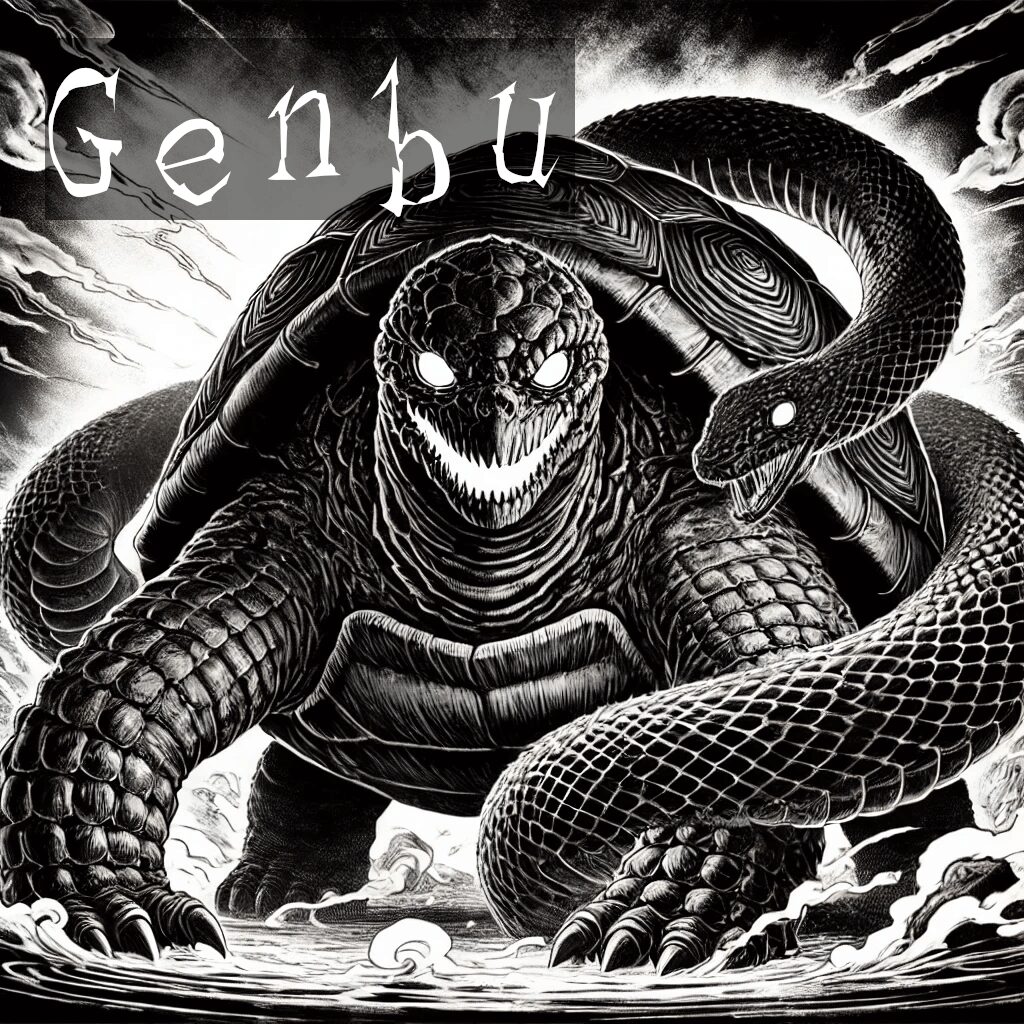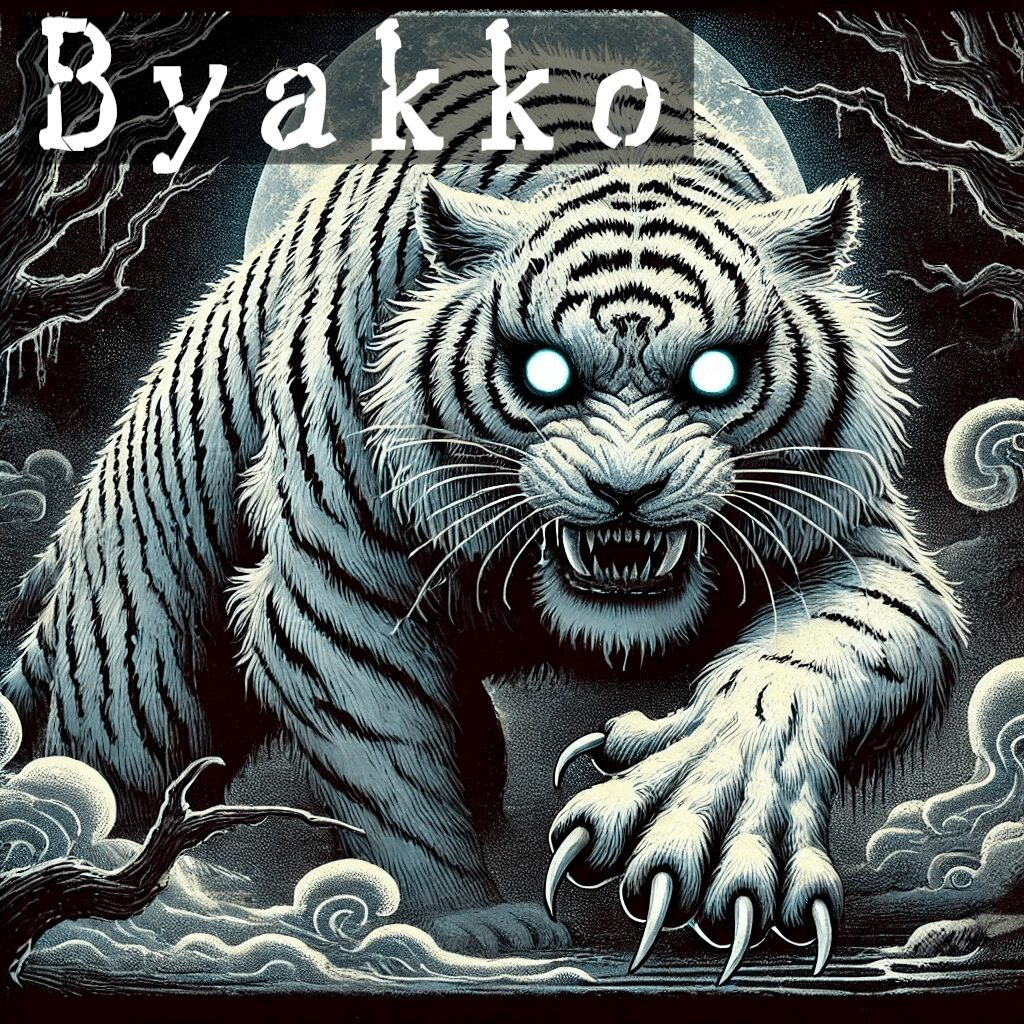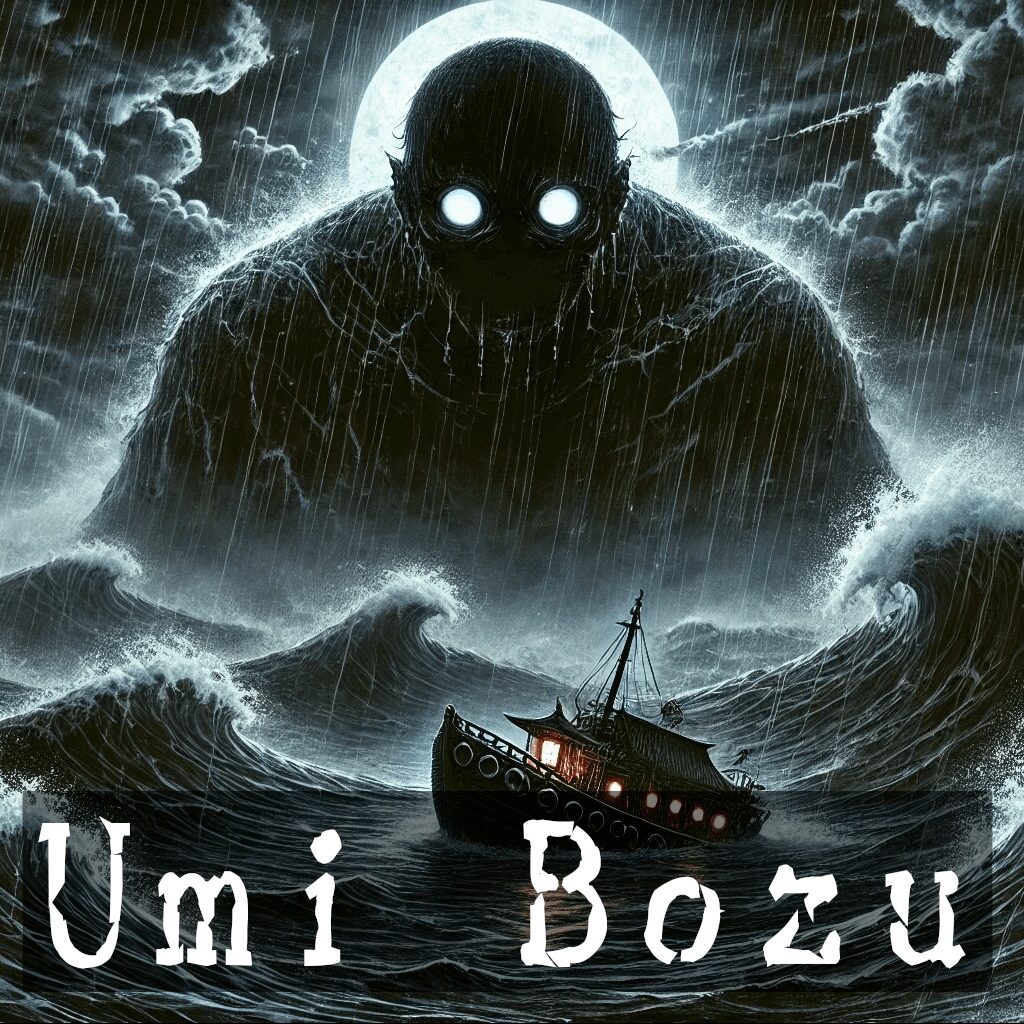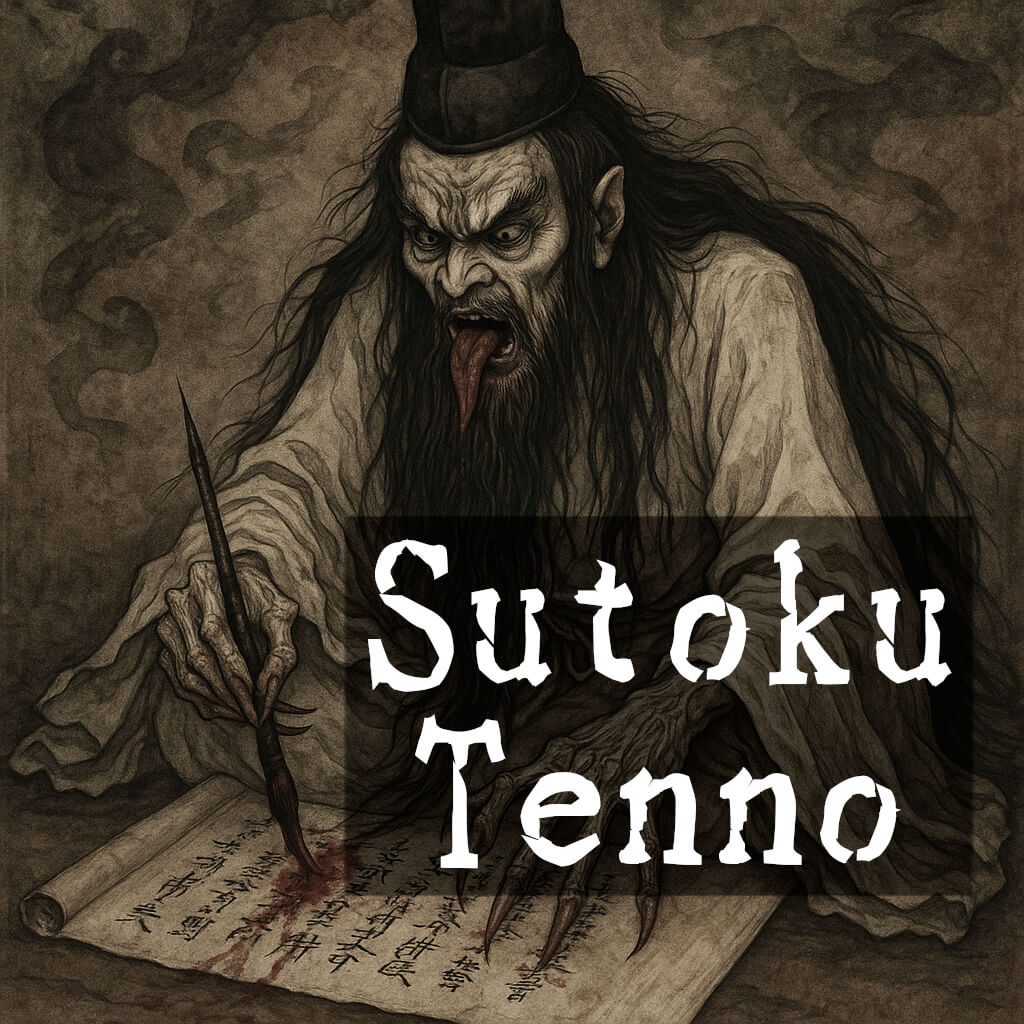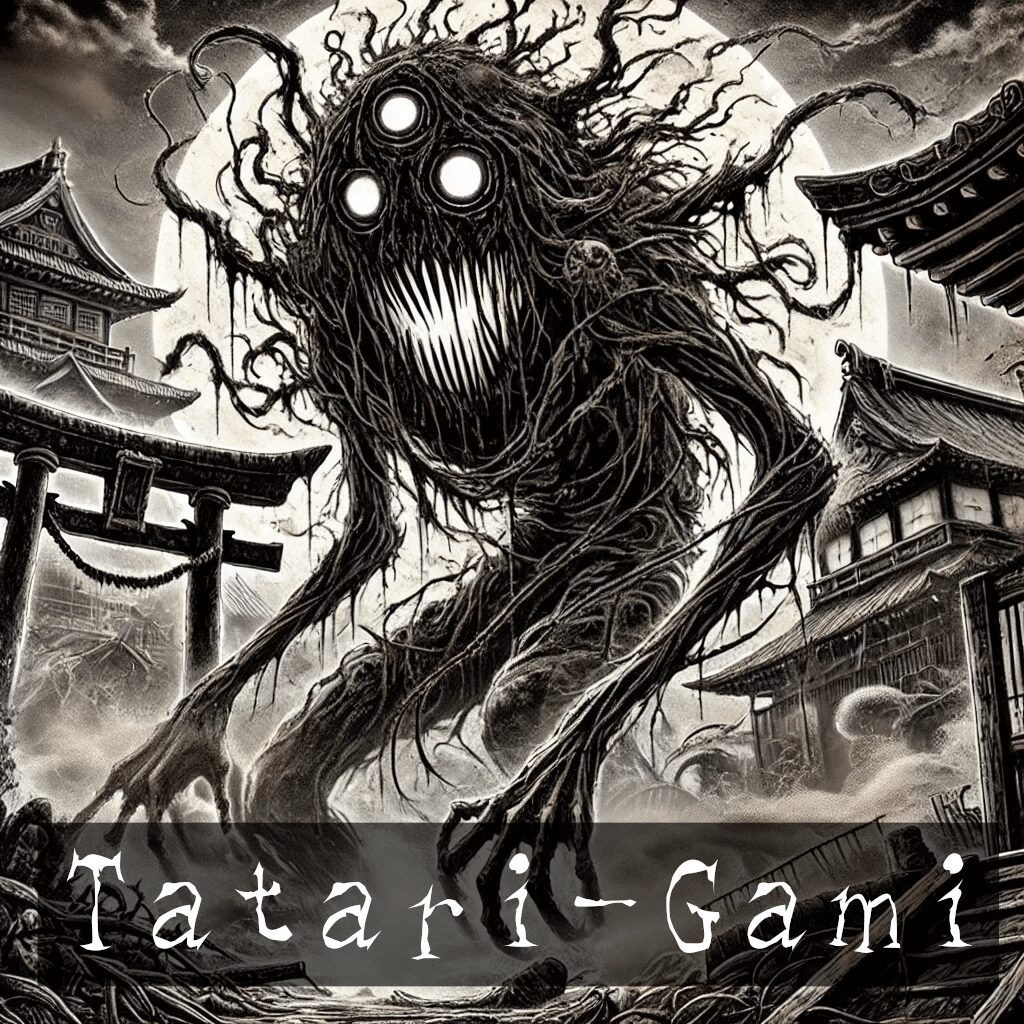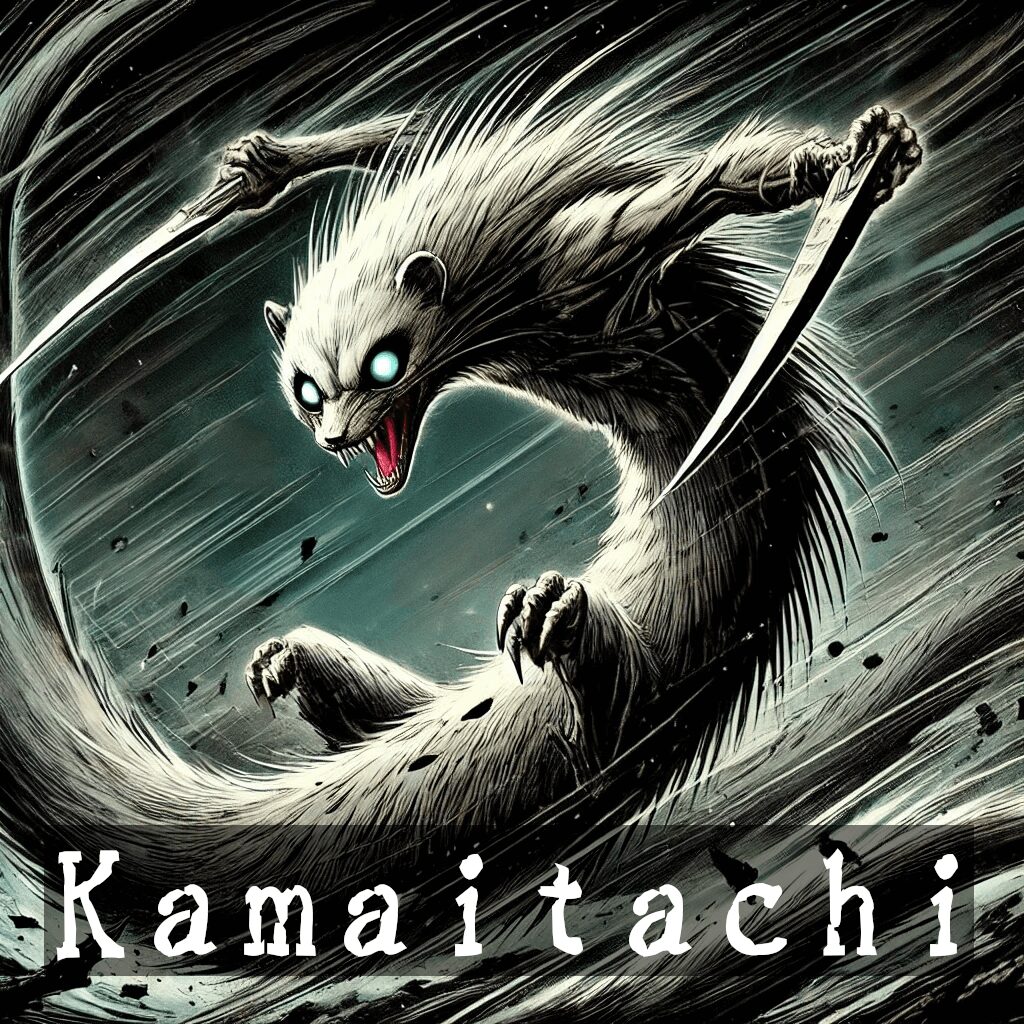Genbu. A giant black turtle with a serpent coiled around its shell — a mystical and awe-inspiring figure from ancient times.
Today, we’ll be diving into the origins of this divine beast, exploring how this fascinating creature found its place in Japanese culture.
What are Genbu?
Genbu (玄武) is one of the Shijin (四神 / Four God), from ancient Chinese cosmology — guardian deities that protect each direction.
These are:
- Seiryu (青龍 / Blue Dragon) of the East
- Suzaku (朱雀 / Red Phoenix Bird) of the South
- Byakko (白虎 / White Tiger) of the West
- Genbu (玄武 / Black Turtle-Snake) of the North
The name combines two Kanjis: Gen (玄), meaning black or dark, and Bu (武), meaning warrior or protection. Together, they symbolise the black guardian of the North.
↓Check this related article as well!
Genbu Story (video)
<–coming soon!–>
Characteristics of Genbu
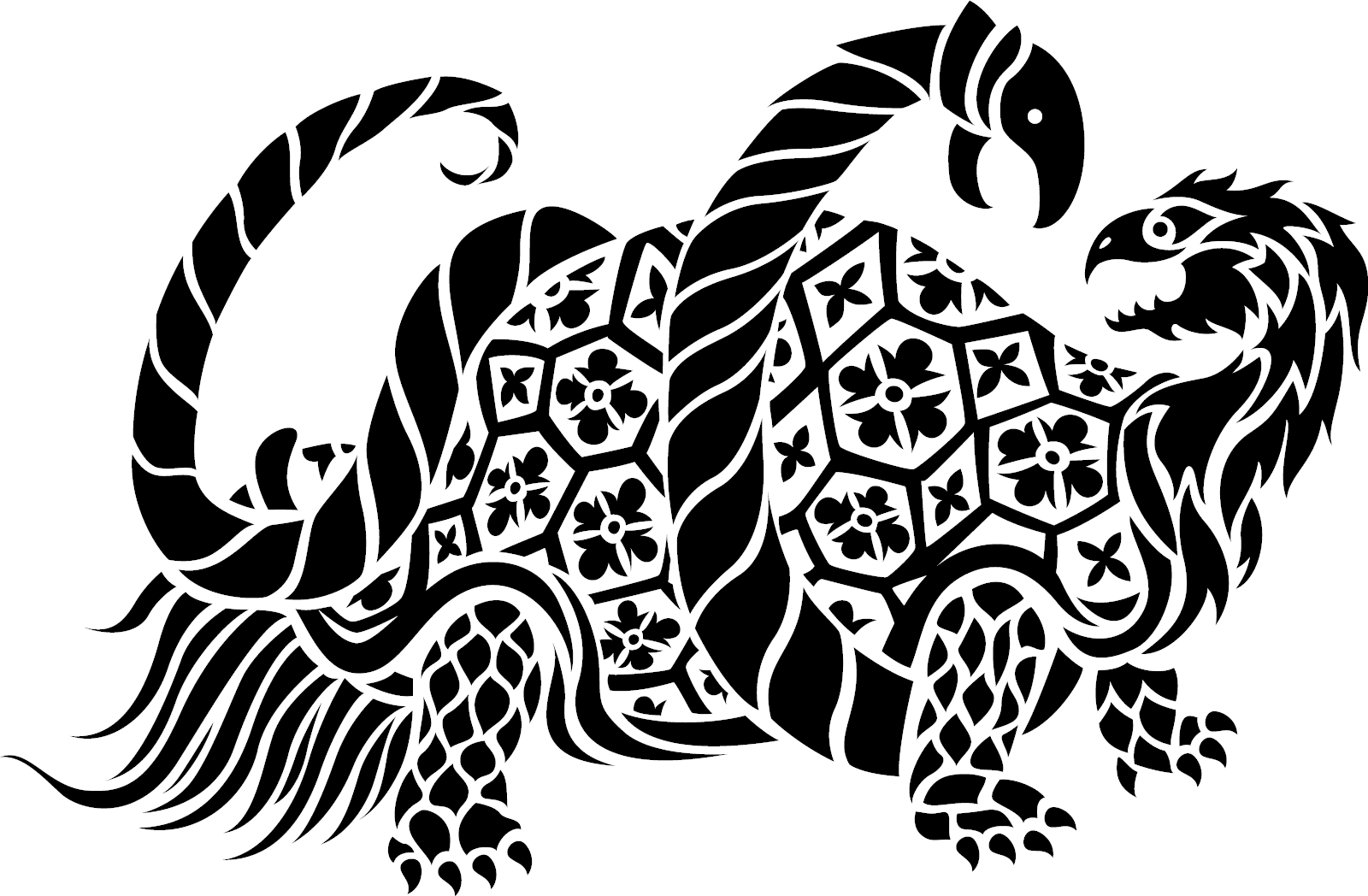
How it Arrived & Evolved in Japan
Genbu made its way to Japan along with Chinese cosmology and geomancy, deeply influencing Japanese beliefs from the Heian period (8th-12th centuries) onwards.
It became central to the concept of Shijin Sōō (四神相応) — the ideal geomantic layout for a city, where each direction is guarded by one of the Four Gods.
In fact, the ancient capital of Heian-kyo (平安京 / now Kyoto) was designed with this very idea in mind. The northern part of the city was protected by Mount Funaoka (船岡山), representing Genbu, which made it become more than a myth — it was woven into the very foundations of the city itself.
The Appearance and Symbolism
Genbu is unique in form — it’s not just a beast, but a fusion of a turtle and a snake.
The turtle, bearing the earth and time upon its back, represents longevity and stability. While the snake, winding around the turtle, symbolises cycles of life and rebirth. Bound together, they create a powerful protective entity.
The divine beast is also associated with water, cold, and the northern direction — concepts often linked to the realm of death and the afterlife in Japanese tradition.
Genbu Worship and Its Legacy in Modern Japan
Even today, shrines dedicated to Genbu exist across Japan. One such place is Genbu Shrine (玄武神社) in Kyoto, where the divine beast is venerated as the northern guardian, protecting the land and its people.
Also, in the realms of feng shui (風水) and home design, the principle of protecting the north — often symbolised by a mountain or a solid backing — is still considered important. This practice, too, can trace its roots back to its belief.
Find Your Kaidan!
Discover your favourite Japanese scary/horror stories
Categories
Let’s talk
Would you like to analyse the story, make theories on it, and share your thoughts?
Please join our Discord channel
where you can share your thoughts and interact with other Kaidan lovers!
